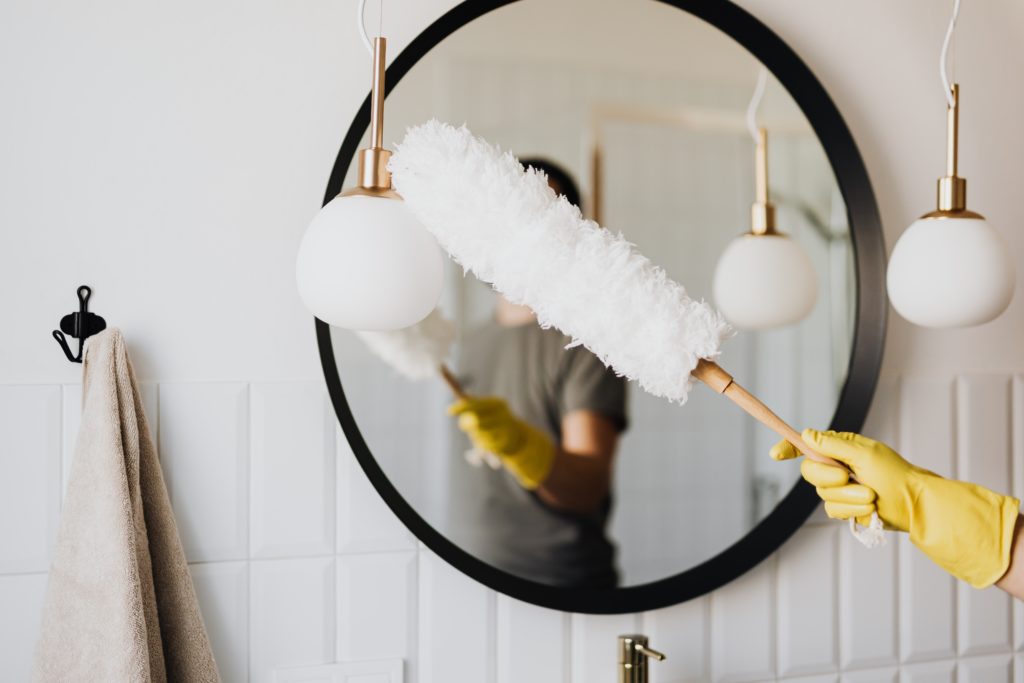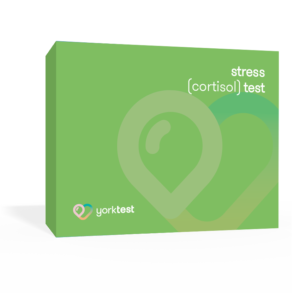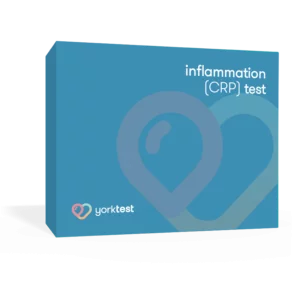Dust mite allergy is a prevalent condition, affecting upwards of 12 million people in the UK and over 20 million in America.1 It is also a growing problem in other parts of the world.
A study by the World Health Organization (WHO) found that dust mite allergy is a widespread problem throughout many parts of Europe, Asia, and Australia.2 The prevalence of such allergies is also increasing in other parts of the world, particularly in Africa.
Like all true allergies, an allergic reaction to dust mites is an immune system response that’s triggered upon exposure. What might be brushed off as light symptoms, like a temporary skin rash or sinus discomfort when exposed to dust, may in fact be an allergy to dust mites.
What are Dust Mites?
Dust mites are tiny, bug-like organisms that live in dust and are found in homes all over the world. They thrive in humid environments and feed on dead human skin cells. They’re microscopically small, so you cannot see them with the naked eye. Dust mites are often confused with insects, however, they’re actually related to spiders (or air-breathing arthropods known as Araneae.)
While dust mites are often associated with dirty homes, they can live in even the cleanest of dwellings. They are most commonly found in bedding, upholstered furniture, and carpeting. They can also be found in other places where dust collects, such as on curtains, drapes, blinds, and floors.
Dust mites are most active during the summer months as they thrive in temperatures of 68 to 77 degrees Fahrenheit and prefer humidity levels of 70% to 80%. During the winter months, dust mites go into a dormant state and can only survive in very dry conditions.
If you’re experiencing an adverse reaction when exposed to dust, then it’s important to educate yourself about the role of dust mites in allergy. Below we share information about dust mite allergy symptoms, treatment, and prevention.
Dust Mite Allergy Symptoms
While it’s easy to dismiss the severity of sneezing and sniffling when exposed to dust, it’s important to know when such signs point to a true allergy. Dust allergy symptoms are generally caused by inflammation of nasal passages, and include:
- Sneezing
- Itchy roof of mouth, nose, or throat
- Postnasal drip or runny nose
- Itchy, red, or watery eyes
- Nasal congestion
- Cough
- Facial pressure and pain
If you have asthma and are allergic to dust mites, you may also experience additional symptoms:
- Shortness of breath
- Tightness in the chest
- Difficulty sleeping
- Wheezing
- A whistling sound when exhaling
- Coughing
- Severe asthma attack
The symptoms of dust mite allergy usually progress gradually. In most cases, they begin with occasional sneezing and sniffling. Some people also experience watery, itchy eyes. As the allergy worsens, these symptoms may become more frequent and severe. They may eventually lead to chronic sinus infections, difficulty breathing, and other problems.
If you have a dust mite allergy, your symptoms may worsen when you’re exposed to higher concentrations of dust mites. This can happen when you visit a friend or family member who has a lot of dust mites in their home. It can also occur if you travel to an area with high levels of dust mites.
How to Diagnose Dust Mite Allergy
If you’re one of the millions who suffer from dust mite allergy, you know how miserable it can make you feel. Symptoms like sneezing, coughing, and watery eyes can make it hard to enjoy life, especially during the warmer months of the year.
Dust mite allergy is often confused with other types of allergies, such as hay fever or pet allergies. Therefore, it’s important that you see an allergist. An allergist can determine if dust mites are the cause of your symptoms and develop a treatment plan that will help you manage your allergy.
To determine whether or not you suffer from dust mite allergy, your healthcare professional might order the following tests:
Allergy Skin Test
The skin prick test is a great way to determine if you’re allergic to dust mites. This test involves placing a drop of allergen on your skin and then pricking the surface of your skin with a needle. If you’re allergic to dust mites, you’ll experience redness, itching, and swelling at the test site.
There is no doubt that allergy skin tests are great for diagnosing dust mite allergies. They are quick, easy, and relatively inexpensive. However, there are a few things to keep in mind before you undergo this type of testing.
First, it is essential to know that skin tests can produce false positives. This means that you may be diagnosed with a dust mite allergy even if you do not actually have one. If you have a family history of allergies, you may be more likely to experience a false positive.
Second, skin tests can also produce false negatives. This means that you may be told you do not have a dust mite allergy when you actually do. If you have a mild allergy, you may be more likely to experience a false negative.
Allergy Blood Test
Not everyone can undergo a skin test. This is usually because either they suffer from a skin condition or are on medication that can affect the results. As an alternative, doctors order a blood allergy test.
Dust mite allergy is caused by an immune reaction to the protein found in dust mites.3 The test works by measuring the level of IgE antibodies in your blood. These antibodies are produced by your immune system in response to an allergen. A high level of IgE antibodies indicates that you are allergic to dust mites.
Blood allergy tests are generally considered to be very accurate for diagnosing dust mite allergies. In fact, they are often used for diagnosis as they can detect even small amounts of allergen-specific antibodies.
Treatment for Dust Mite Allergy
If you suffer from dust mite allergy, the best way to control your symptoms is to prevent exposure to dust as much as possible. However, this can be difficult, as dust mites are found in many common household items. In addition to avoiding exposure, you may also need to take medication to manage your symptoms.
Dust Allergy Medications:
Your healthcare provider might ask you to take one of the following medications to treat your dust mite allergy:
Corticosteroids
Corticosteroids are a type of medication that can be used to treat house dust mite allergy. They work by reducing inflammation and swelling. These drugs include mometasone furoate (Nasonex), ciclesonide (Omnaris), fluticasone propionate (Flonase Allergy Relief), triamcinolone (Nasacort Allergy 24HR), etc.
Corticosteroids can be taken as pills, syrups, or nasal sprays. Inhaled corticosteroids are usually the preferred choice for treating dust mite allergy. This is because they have fewer side effects than oral corticosteroids.
Antihistamines
Antihistamines are one of the most common types of medication used to treat an allergy to dust mites.
There are various types of antihistamines available on the market today. Some of the most common include loratadine (Claritin), cetirizine (Zyrtec), and fexofenadine (Allegra).
These medications work by blocking the histamine response that is triggered by dust mites. This can help reduce dust allergy symptoms, such as sneezing, itching, and watery eyes. Some common side effects of antihistamines include drowsiness and dry mouth.
Decongestants
If you suffer from dust mite allergies, your doctor may recommend a decongestant as part of your treatment plan. Decongestants can help to relieve the symptoms of congestion and pressure by shrinking swollen tissues in your nasal passages.
Decongestants are available in various forms, including oral pills, syrups, nasal sprays, and drops. Oral decongestants may not be suitable for everyone. If you have high blood pressure, glaucoma, or cardiovascular disease, you should speak to your doctor before taking any decongestant medication.
On the other hand, decongestant nasal sprays can be effective in reducing allergy symptoms, but only for a short time. If you use a decongestant spray for more than three days in a row, it may cause your nasal congestion to become worse.
Some common brands of decongestants include Sudafed and Afrin. Your doctor may also prescribe a medication that combines an antihistamine with a decongestant like Zyrtec-D. Decongestants are generally safe and effective when used as directed.
Cromolyn Sodium
Cromolyn Sodium is available in the form of a nose spray and works by helping to reduce inflammation and swelling in the nasal passages. This can help to relieve symptoms such as sneezing, runny nose, and congestion. Cromolyn Sodium is generally well-tolerated, but some people may experience side effects such as headaches or dizziness.
You should take Cromolyn Sodium four times a day, every six hours, to treat dust mite allergy. However, if you suffer from severe dust mite allergy, you may be advised to use Cromolyn Sodium nose spray 6 times a day. For best results, use it at the same time each day.
Other Treatments
If you suffer from dust mite allergy, you may not get complete relief from medicines. In this case, you may need to switch to immunotherapy.
Apart from dust mites, immunotherapy can be used to treat other allergies like pollen, dust, mold, and pet dander, as well.
Allergy Shots – Subcutaneous Immunotherapy (SCIT)
If you’re allergic to dust mites, you may be a candidate for subcutaneous Immunotherapy (SCIT), also known as allergy shots. SCIT is a form of treatment that can help reduce your symptoms by gradually exposing you to increasing amounts of allergens.3
During SCIT, you’ll receive injections of dust mite allergens just below the surface of your skin. The amount of allergen in each injection will be increased over time, eventually attaining an optimal maintenance dose. Many patients find complete relief after one to three years of SCIT, whereas some physicians recommend continuing SCIT for five or more years. SCIT provides long-lasting symptom relief and is an excellent way to manage dust mite allergies.
Sublingual (under-the-tongue) Immunotherapy (SLIT)
Allergy to dust mites is often treated with sublingual immunotherapy (SLIT), also known as under-the-tongue immunotherapy.
SLIT involves placing a drop of allergen extract under the tongue and allowing it to be absorbed into the bloodstream. This provides a small amount of exposure to the allergen, which helps the body build up immunity to it. SLIT tablets are FDA-approved, and the treatment’s primary motive is to help people improve their tolerance to dust mites.
It typically takes 3 to 4 months for SLIT to start working. However, some people may experience relief from symptoms within a few weeks. It is important to continue taking SLIT even if you do not immediately notice a difference, as it can take time for the therapy to build up in your system and have an effect.
Prevention
We all want our homes to be clean and free of dust, but sometimes it can feel like an impossible task. Dust mites are tiny creatures that thrive in dusty environments, and their presence can make asthma and allergies worse. With proper diligence, there are simple steps you can take to prevent dust mites from taking over your home.
Keep Humidity Levels Low
One way to help prevent dust mite allergies is to keep the humidity in your home low. Dust mites thrive in humid environments, so by keeping the air in your home drier, you can help reduce their population and lessen your allergy symptoms. We recommend using a hygrometer to monitor the humidity levels in your home.
Choose Hypoallergenic Bedding
Avoid bedcovers that trap dust easily and are difficult to regularly clean. Look for hypoallergenic pillow covers and mattresses. These products are designed to minimize the number of dust mites that can accumulate.
Minimize Clutter
Dust tends to accumulate in cluttered areas, so by reducing the amount of clutter in your home, you can reduce dust mite population. Be sure to vacuum regularly and dust with a damp cloth to remove dust mites and their allergens from surfaces.
Use an Air Purifier
One way to prevent dust mite allergy is by using an air purifier. Air purifiers can remove dust mites and other allergens from the air, providing relief to allergy sufferers. Look for an air purifier with a HEPA filter, which is specifically designed to trap tiny particles like dust mites. Be sure to clean or replace the filter regularly to keep the air purifier working properly.
Allergen Covers for Bedding
Allergen covers for bedding create a barrier between you and the dust mites, preventing them from coming into contact with your skin.
Allergen covers are specially designed to seal dust mites into your pillows and mattresses. This can offer significant relief from symptoms and help you get a good night’s rest.
Wash Bedding Weekly
Another important thing you can do to treat your allergy is to wash your bedding in hot water every week. This will kill the dust mites and their eggs.
Be sure to use a detergent designed for people with allergies, as regular detergents may not be effective against dust mites. You should also dry your bedding on high heat to kill any remaining dust mites.
Weekly Vacuuming
One of the best ways to keep dust mites under control is by vacuuming your house regularly. A powerful vacuum cleaner can effectively remove most dust mites from your home. Be sure to vacuum carpets, upholstered furniture, and curtains. You should also vacuum your mattress and pillow every week.
Keeping Your Dust Mite Allergy at Bay
If you suffer from dust mite allergies, you know how miserable they can make you feel. Itchy, watery eyes, a stuffy nose, and constant sneezing can make it hard to get through the day. Fortunately, there are treatments, remedies, and prevention measures that can help reduce the symptoms of dust mite allergies.
If you suspect that you may be allergic to dust mites, the best course of action is to consult with a physician, allergist, or immunologist. These professionals will be able to help you confirm your allergy and develop a treatment plan. While there is no cure for dust mite allergy, symptomatic relief is possible through a variety of methods.
References
1 Aggarwal P, Senthilkumaran S. Dust Mite Allergy. [Updated 2022 May 1]. In: StatPearls [Internet]. Treasure Island (FL): StatPearls Publishing; 2022 Jan-. Available from: https://www.ncbi.nlm.nih.gov/books/NBK560718/
2 International Workshop Report. (‎1988)‎. Dust mite allergens and asthma: a worldwide problem*. Bulletin of the World Health Organization, 66 (‎6)‎, 769 – 780. https://apps.who.int/iris/handle/10665/264577
3 Miller, Jeffrey D. “The Role of Dust Mites in Allergy.†Clinical reviews in allergy & immunology vol. 57,3 (2019): 312-329. doi:10.1007/s12016-018-8693-0
4 John M. Eisenberg Center for Clinical Decisions and Communications Science. Subcutaneous and Sublingual Immunotherapy To Treat Allergic Rhinitis/Rhinoconjunctivitis and Asthma. 2013 Aug 22. In: Comparative Effectiveness Review Summary Guides for Clinicians [Internet]. Rockville (MD): Agency for Healthcare Research and Quality (US); 2007-. Available from: https://www.ncbi.nlm.nih.gov/books/NBK158932/













